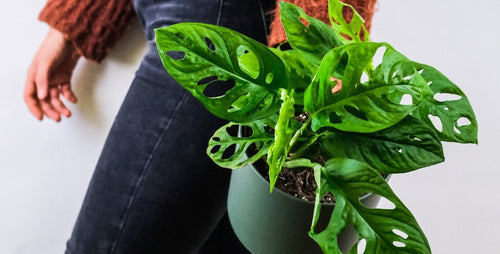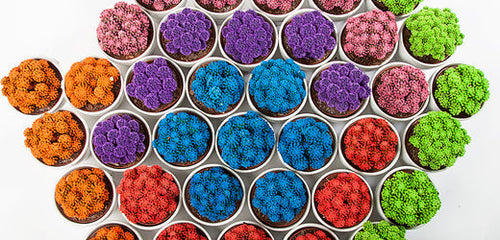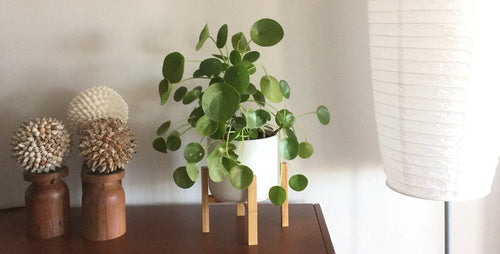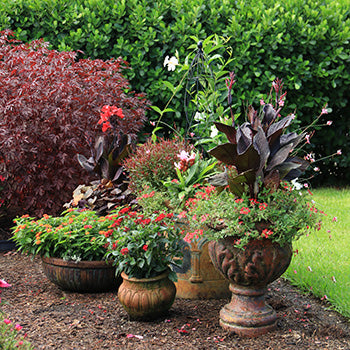By Doug Jimerson
It’s time to bring your tender houseplants and tropical bloomers indoors when weather starts to cool in autumn. That way you can enjoy their colorful flowers and foliage all winter long. Left outdoors, tropical plants such as mandevilla, tropical hibiscus, croton, and foliage plants such as palms and philodendrons will perish once the temperatures drop below freezing. Here are 11 tips for moving your plants indoors.
1. Plan Early
Don’t wait until frost threatens to bring your plants inside. Plants aren’t fond of a sudden change of venue. Start moving your plants indoors in the late summer or early fall. Going directly from a cool outdoor environment to the warm, dry atmosphere of your home sends plants into shock.
 2. Inspect Plants
2. Inspect Plants
Before you move any plants indoors look them over carefully for insect or animal pests. Spiders, bugs, and even small frogs or lizards could be hiding in the foliage.
Note: Some gardeners spray their plants with insecticidal soap, especially the bottoms of the leaves, even if they don't see insect pests. This reduces the chance of importing insects to your home.
3. Spray Off
Before you bring your houseplants indoors for the winter, dislodge loose leaves or potential stowaway insects with a strong spray of water from the garden hose. The spray cleans off the leaves, too.
4. Prune Up
During the summer some of your favorite plants might have grown larger or lost their shape. Plants such as tropical hibiscus, for example, can put on too much size over summer to be moved indoors easily for autumn. That’s why it’s a good idea to prune them in the late summer, cutting all the branches back by a third. Be sure that each remaining stem has two or three leaf nodes left in place. Do this early enough so that the plants have about two weeks to recover before you bring them indoors. Other plants, such as topiary eugenia, can use a trim up to keep their concise shape.
5. Stop Feeding
As the summer winds down, cut back on fertilizing all your plants. Feeding encourages new growth that might die once the plant is moved into your house. Your goal is to slow the plant down, not encourage it to keep growing.
 6. Evaluate Your Home
6. Evaluate Your Home
Make sure you know if your home can accommodate your plants’ needs before you drag them inside. For example, tropical hibiscus need a lot of sunshine and will do best in an unobstructed south-facing window. If all you have to offer is a dark living room, then your tropical hibiscus will quickly fail. Other plants such as anthurium, dracaena, and pothos prefer bright, indirect light provided by an east- or west-facing window while ferns, ivy, and philodendrons are happiest with north light.
7. Use a Drip Tray
Place your potted plants on a drip tray or saucer to protect your floors and furniture from accidental spills as well as to provide a basin for excess water. Never let your plants sit in water for extended periods of time, but if you are going away for a weekend, putting a little extra water in the saucer or drip tray will help keep your plant hydrated.
8. Give Regular Physical Exams
Check the health of your plants every week through the winter. Watch for signs of disease or insect pests. Mealybugs, spider mites, and scale are three common pests that often attack houseplants, especially when the air is warm and dry. One way to keep these pests at bay is to give your plants a daily misting to increase the humidity around them. Or, place them in the sink or bathtub once a week and spray gently with warm water.
9. Monitor Temperature
Houseplants are the happiest when daytime temperatures remain between 70 and 80ºF (21 and 27ºC) and nighttime temperatures hover between 55 and 65ºF (13 and 18ºC). Keep your plants away from heat ducts that will dry them out or entryways where they might get hit by a cold blast of air. And, don’t let their leaves press against a window because the glass may be a lot colder than the room itself.
10. Cluster Plants
Placing plants together is a good way to insure success because you often forget to water a stray plant in an out-of-the-way corner. Plus, when grown near each other, your plants will create their own microclimate from the slow evaporation of moisture from their soil.
11. Be Realistic
If you are short on space or time, you might not want to go to the trouble to bring in more plants than you can handle. Select the most carefree plants for your home and offer the rest to a friend or family member. For example, if you don’t have the correct light conditions for a sun-loving plant such as tropical hibiscus, find someone who does. There is nothing sadder than watching a favorite plant die in your living room simply because you can’t provide the environment it needs.


















